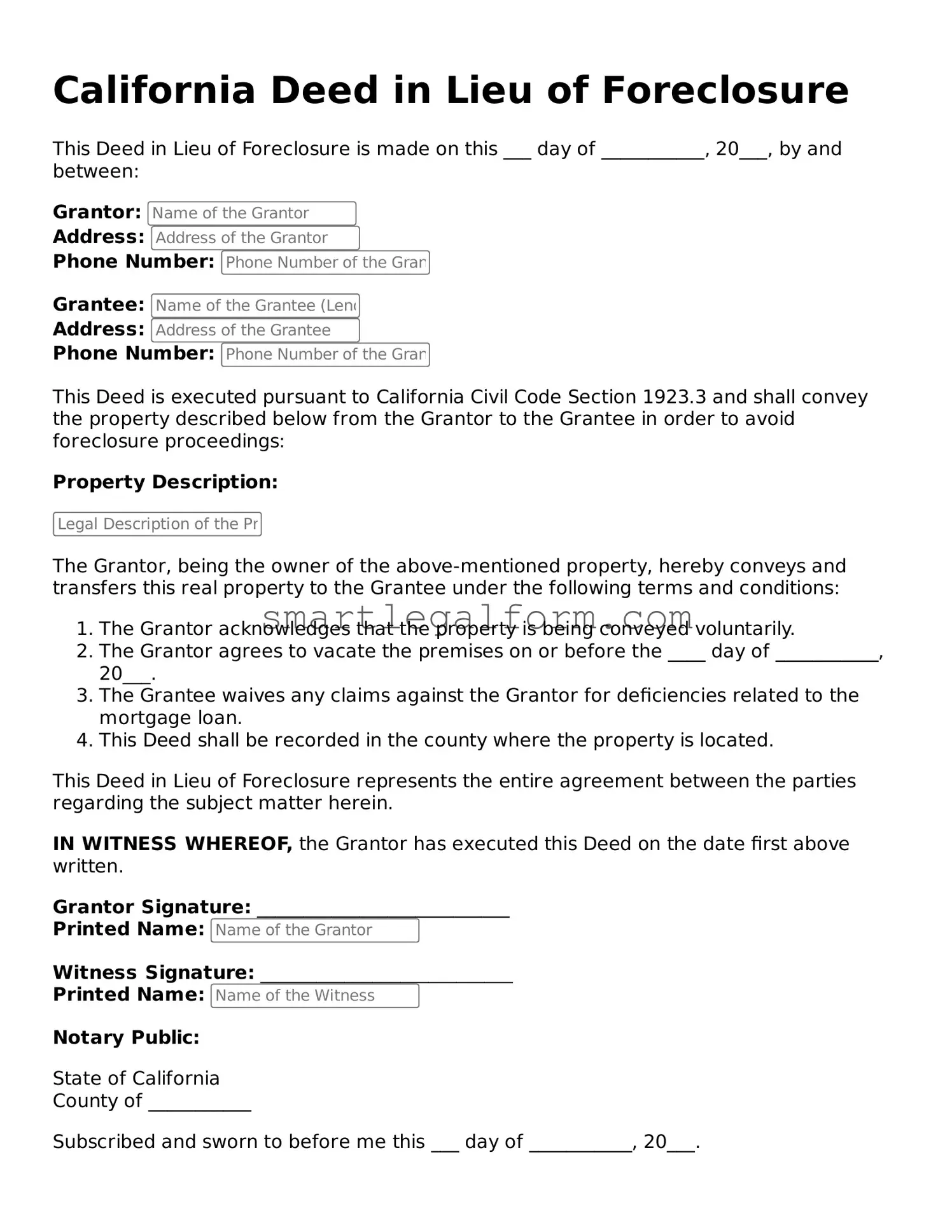Printable California Deed in Lieu of Foreclosure Document
A Deed in Lieu of Foreclosure is a legal document that allows a homeowner to transfer their property to the lender in order to avoid foreclosure proceedings. This option can provide a smoother and less stressful way to resolve mortgage issues. If you’re considering this route, you can start by filling out the necessary form by clicking the button below.
Fill Out Your Form Online
